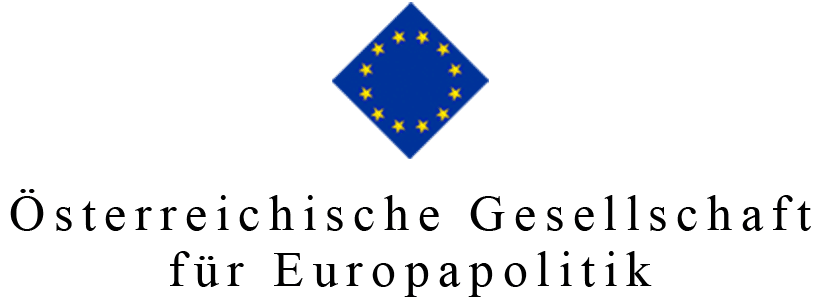Policy Recommendations
-
- EU media policy is advised to realize social media’s constructive potential for transnational communication. The European Commission should implement a public value approach and enable public service media to engage and cooperate on social media, coordinated by the European Broadcasting Union.
- In a European network on YouTube, interconnected public service funded formats can contribute to transnational communication and to the visibility of diversity within the EU and the individual EU countries. The formats should aim for interactions across countries as well as for user activation.
- In evaluating the public value of YouTube formats, media policy-makers, content creators, and scholars are recommended to define criteria that respect the principles of transnational communication and user activation. Key aspects can be information, discussion, participation, and identity formation.
Abstract
The persisting crisis of transnational communication within the European Union (EU) results from essential deficits in the formation of a European public sphere (EPS) and European identity. On the level of mass media, the European public sphere is segmented into loosely connected national discourses on EU issues. These are closely related to different national constructions of European identity and lead to conflicts between the member states. To address the crisis of transnational communication and promote European identity, media policy must take the opportunities provided by social media that complement the mass media in the digital age. Unlike authors who call for a new European social media platform, this paper recommends stronger engagement by public service media (PSM) on established platforms, coordinated by the European Broadcasting Union (EBU). In light of national examples from the UK and Germany, public service media are advised to cooperate within a European network on YouTube. Although public service YouTubers must follow a public value-based approach, they must adapt to social media logics. This includes the production of native platform content that encourages users to share and interact and has a personal, entertaining, and emotional style, as well as connectivity. The latter refers to the mutual promotion of and interactions between YouTubers across the EU, discussions of conflicting viewpoints on EU issues, and collaboration in motivational campaigns. The public value of participating in YouTube formats should be evaluated according to criteria that respect the principles of transnational communication and user activation.
****************************
YouTubing Europe:
Transnational Communication and Identity Formation in a European Network
The European Platform Vision
Proposals for a European social media platform have enriched recent debates on the formation of a European public sphere (EPS). The French president, Emmanuel Macron, and members of the EU parliament support the vision of a European Netflix that offers European movies and serial productions. Similarly, media directors in Germany call on EU public service broadcasters for social media cooperation to promote cultural diversity within the EU. It is argued for establishing a European YouTube that would contribute to European identity formation. In such a network, public broadcasters and other societal institutions should share TV productions, lectures, and videos of performing arts across the EU. While these ideas follow a rather culturally-focused top-down approach, others favor a European communication platform that combines the transmission of journalism and culture, along with opportunities for participation (e.g., Hillje, 2019).
Social media can compensate for the mass media’s deficits in transnational communication within the EU.
Plans for promoting European identity on social media start from crisis diagnoses, rightly stating that the EU suffers from deficits in public communication and a lack of European identity. This paper argues that social media can compensate for the mass media’s deficits in transnational communication within the EU. It calls on the European public service media (PSM) for coordinated social media engagement and recommends the establishment of a European network on the video-sharing platform YouTube.
European Public Sphere and European Identity
Political and scientific debates on the emergence of the European public sphere intensified in the early 1990s and 2000s, after the signing of the Maastricht Treaty (1992) shifted substantial political power from individual nation-states to the EU. Early discussions dealt with the utopian ideal of a coherent and persistent European public sphere based on an integrated European media system. So far, transnational media, such as the newspaper The European (1990–1998) or the TV programs Arte and Euronews, failed to reach mass audiences in EU countries and were rather limited to societal and economic elites. In a more pragmatic way, the European public sphere is conceptualized as the transnationalization of national mass media. As several scholars have demonstrated, public service media and other quality media integrate EU issues into their coverage, enable transnational discourses, and constitute communicative interactions across borders. Generally, however, the European communication community is segmented into national discourses since national media have a predominant focus on their own nation’s representatives and their perspectives on EU issues (Pfetsch & Heft, 2015). The resulting domestication of European debates has consequences for the formation of European identity, which gains density in media discourses (Eilders & Lichtenstein, 2010). European identity can be understood as a sense of belonging to the EU and togetherness with other Europeans, which is related to specific ideas about common European goals, values, and culture. In a segmented European public sphere, however, belonging and togetherness are constructed and evaluated through national filters. Although most countries‘ media discourses represent the EU as a community with shared political values, there are major differences concerning the extent of national sovereignty within the political EU, market liberalization, and financial solidarity. National constructions of belonging to the EU are closely related to critical evaluations of belonging with other EU countries (Lichtenstein & Eilders, 2019).
In a segmented European public sphere belonging and togetherness are constructed and evaluated through national filters.
In this persistent crisis of transnational communication, deficits in the European public sphere on the level of the mass media can be compensated by social media discourses. Social media platforms have become integral parts of our communication infrastructure (Van Dijck et al., 2018). Facebook, Instagram, and YouTube supplement the mass media in the transmission of information and opinion, especially among the digital natives. Social media offer strong opportunities for the integration of national discourses and citizen inclusion, as well as help elaborate on and enhance our understanding of different constructions of European identity. In practice, however, social media do not give the impression of contributing to a flourishing of the European public sphere or European identity. Instead, their commercial logic and prioritization of emotional and polarizing content result in a persistence of national perspectives and the rise of populist communication that bypasses legacy media filters.
Media Policies Must Empower Public Service Media
To overcome the crisis of transnational communication, media policy must take the opportunities for the European public sphere provided by social media and prevent dysfunction in online communication. Since national capabilities to influence communication on global platforms are limited, initiatives should be launched on the EU level. Already established quota regulations for European productions on streaming services promote European cultural diversity. With its forthcoming Digital Service Act, the European Commission is attempting to establish new rules in the online environment. Regulations will concern eCommerce, transparency rules, and containment strategies for fake news and hate speech (Digitaleurope, 2020). Media policies that aim to actively support transnational discourses must go beyond regulations and follow a public value-centered approach. In such a framework, the public service media should play a key role because they are social institutions and obligated to serve society. They provide reliable information and hard news, as well as reflect on EU issues. Their presence in a society’s media system mitigates partisanship and increases news standards (Bos et al., 2016).
Media policies that aim to actively support transnational discourses must go beyond regulations and follow a public value-centered approach.
Compared to their commercial counterparts, the public service media are relative newcomers to social media since their editorial priorities and legitimacy as publicly-funded institutions conflict with commercial platform and algorithm logics. Further restrictions that limit the public service media’s presence in social media, as well as the resources invested, are due to EU directives. These aim to prevent distortions of competition with commercial media companies and on the internal market (Llorens, 2019). Since directives are translated into national regulations in different ways, the public service media vary in the extent to which they perform on social media across EU countries (Sehl et al., 2018). To set common standards and empower the European public service media for stronger and more interconnected engagement on social media, EU media policy must turn from economy-centered regulations to directives that emphasize public value. A coordinating role should be taken by the European Broadcasting Union (EBU), which is frequently mentioned in discussions on the future of the public service media in the age of social media. The European Broadcasting Union is an international alliance of public service media organizations and aims for cooperation in content exchange and production. Thus, it is designed for transnational communication.
To implement strong social media engagement by public service media and coordinated by the European Broadcasting Union, two options can be discussed. The first option follows proposals to establish a new public service-based social media network (Hillje, 2019). Such a new platform would be less dependent of commercial imperatives. Whereas Facebook and YouTube generate advertising revenues with content uploaded by third parties, a new platform would allow for an autonomous financing system. Commercial content providers might participate, but the platform infrastructure would be under the public service media’s control. This also includes the opportunity to program algorithms that value constructive participation instead of polarization.
It has, however, been rightly argued that a new social media platform has low chances of competing with established and quasi-monopolistic commercial platforms. Consequently, a new platform would likely develop into an elitist bubble for highly interested users and have a minimal impact on the dysfunctional communication on established platforms. To tackle the crisis of transnational communication, the public service media must address and activate the users on existing social media platforms. This is the second option for the public service media’s online engagement.
To tackle the crisis of transnational communication, the public service media must address and activate the users on existing social media platforms.
A European Network on YouTube
So far, the public service media have engaged on established social media using strategies to generate traffic to their own websites and published native content to reach younger audiences. Whereas Twitter serves as a news ticker for highly news-interested users, activities on Facebook, Instagram, and YouTube combine the principles of connectivity and publishing content (Sehl et al., 2018). Promising examples stem from the British Broadcasting Corporation (BBC) and the German network Funk. They demonstrate that the video-sharing platform YouTube is particularly suitable for the public service media to profit from editorial expertise and can fulfill important functions in the integration of audiences. A similar European network on YouTube should be organized by the European Broadcasting Union but could be funded by the respective national public service media. It should consist of a multitude of formats that represent diversity within the EU and the individual member states. For the performance of a European network on YouTube, the examples of the BBC and Funk have several implications.
Transferred to the formation of a European network on YouTube, public service-funded YouTubers from different member states must promote each other.
First, learned conventions from TV cannot be simply imported to social media. Although the public service media must respect professional norms and standards, they cannot ignore social media logics. These deal with encouraging users to participate rather than simply providing information. Instead of using YouTube as a secondary distribution channel, the public service media, thus, must produce native content that involves smaller target audiences and motivates them to share and comment. Second, the production of video content should follow a style that viewers deem attractive and must take algorithmic processes into account. One important key factor is personalization, meaning that individual YouTubers interact with users in an authentic way, including the sharing of personal thoughts on issues. Further aspects are the use of humor and play, as well as emotion, an informal language, and position-taking on issues. In the presentation of EU issues, this means the playful confrontation and discussion of different positions and identities within the EU rather than a balanced pan-European perspective. Third, the public service media should exploit principles of connectivity and cooperation. As the example of Funk demonstrates, the mutual promotion of YouTubers from the network and interaction across single channels increase their relevance. Transferred to the formation of a European network on YouTube, public service-funded YouTubers from different member states must promote each other. On their channels, they should position themselves on EU-related issues and provoke discussions with conflicting viewpoints presented by other countries’ YouTubers. The YouTubers should interact, conduct co-productions, and, prior to European elections, for instance, join together to promote democracy and voter participation. Formats can deal with not only news and opinion but also lifestyle and travel journalism.
The YouTubers should interact, conduct co-productions, and, prior to European elections, for instance, join together to promote democracy and voter participation.
Whereas the establishment of a European network on YouTube brings media policies into new territory, carefully defined criteria could help evaluate the public value of YouTube formats. Although the criteria should derive from an international dialogue between content creators, media policy-makers, and scholars, research on the European public sphere identifies four key elements. First, European YouTube formats should provide at least basic information that motivates users to search for further information on a given topic. Second, they should integrate other countries’ perspectives on EU issues and insights into different countries’ cultures and societies. Third, the formats should promote citizen participation and engagement. Therefore, they must address citizens’ personal experiences and allow for interaction with users. Fourth, in interactions within the European YouTube network, the formats should contribute to inclusive identity formation that goes beyond national constructions of European identity.
- Bos, L., Kruikemeier, S., & de Vreese, C. H. (2016). Nation Binding: How Public Service Broadcasting Mitigates Political Selective Exposure. PLoS One, 11(5), 1–11.
- Digitaleurope (2020, May 4). Towards a more responsible and innovative internet. Digital Services Act position paper. https://www.digitaleurope.org/wp/wp-content/uploads/2020/05/DSA_position_paper_May2020.pdf
- Eilders, C. & Lichtenstein, D. (2010). Diskursive Konstruktionen von Europa. Eine Integration von öffentlichkeits- und Identitätsforschung. Medien & Kommunikationswissenschaft, 58(2), 190–207.
- Hillje, J. (2019). Plattform Europa. Warum wir schlecht über die EU reden und wie wir den Nationalismus mit einem neuen digitalen Netzwerk überwinden können. Dietz.
- Lichtenstein, D. & Eilders, C. (2019). Lost in uncertainty. How the Euro crisis affected European identity constructions in national media discourses. International Communication Gazette, 81(6–8), 602–622.
- Llorens, C. (2019). The European Union and PSM in Troubled Democracies: A Bridge Too Far? In E. Połońska & C. Beckett (eds.), Public Service Broadcasting and Media Systems in Troubled European Democracies (pp. 41–65). Palgrave Macmillan.
- Pfetsch, B. & Heft, A. (2015). Theorizing communication flows within a European Public Sphere. In T. Risse (ed.), European public spheres: Politics is back (pp. 29–52). Cambridge University Press.
- Sehl, A., Cornia, A., & Nielsen, R. K. (2018). Public Service News and Social Media. Reuters Institute for the Study of Journalism.
- Van Dijck, J., Poell, T., & de Waal, M. (2018). The Platform Society. Public Values in a Connective World. Oxford University Press.
ISSN 2305-2635
The views expressed in this publication are those of the author and not necessarily those of the Austrian Society of European Politics or the organisation for which the author is working.
Keywords
European Public Sphere, European Identity, Social Media, YouTube Network, Public Service Media, Transnational Communication
Citation
Lichtenstein, D. (2020). YouTubing Europe:Transnational Communication and Identity Formation in a European Network. Vienna. ÖGfE Policy Brief, 22’2020







